Great Packington, Warwickshire: One Place Study.
Heneage Finch and Louisa Thyne, aristocratic artists.
Heneage Finch, 4th Earl of Aylesford, was born on 4 July 1751 at Sion House, London. He was the son of Heneage Finch, 3rd Earl of Aylesford, and Lady Charlotte Seymour. Heneage married Louisa Thyne on 26th November 1781 in Deverill, Longbridge, Wiltshire. Louisa was the eldest daughter of Thomas Thynne, 1st Marquess of Bath and his wife Lady Elizabeth Bentinck. Louisa had been born on 25 March 1760 and was baptised on 24 April 1850 at St George, Hanover Square, London.

Image credit: British Museum.
From 1784, Louisa studied botany, growing and conserving them in her herbarium. She produced over 2,800 botanical watercolour drawings of the flora local to Packington Hall and documented about 30 first records of plants from the Warwickshire area. She was well respected in the filed and was asked to contribut to the Botanists Guide Through England and Wales, by Lawson Turner and Lewis Weston Dilwyn. She also collected minerals, with these and her many manuscripts are now part of the collection in the Natural History Museum.
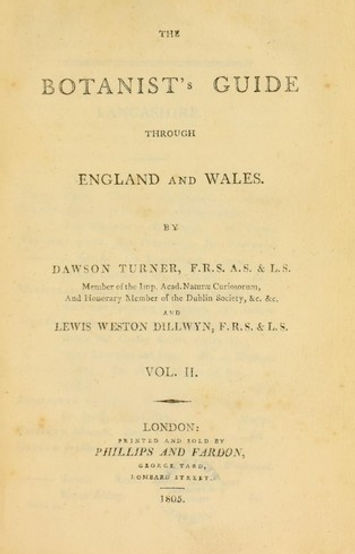
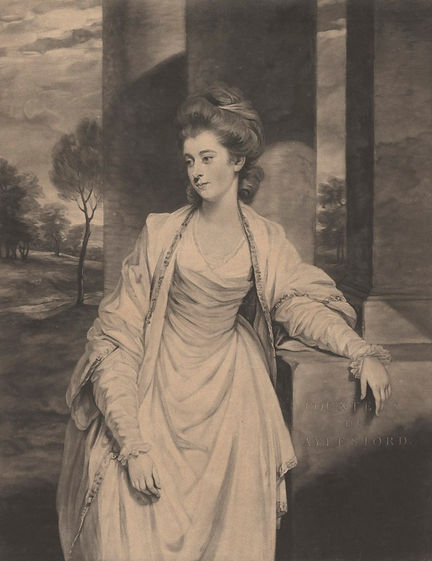
Images credit: Internet Archive and National Portrait Gallery.
Examples of Louisa's work:
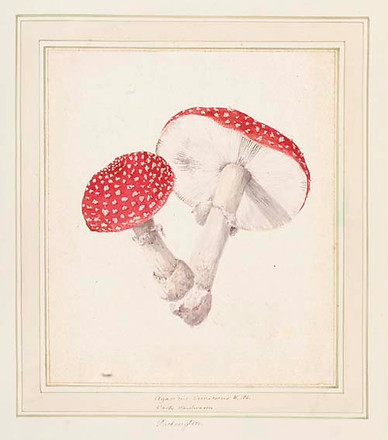

Credit: Minneapolis Museum of Art and Mutual Art.

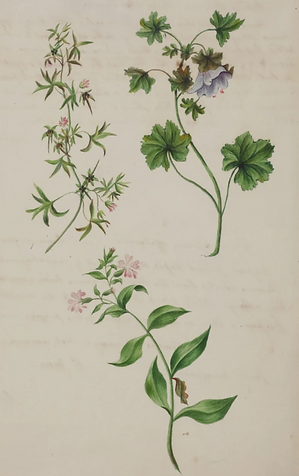
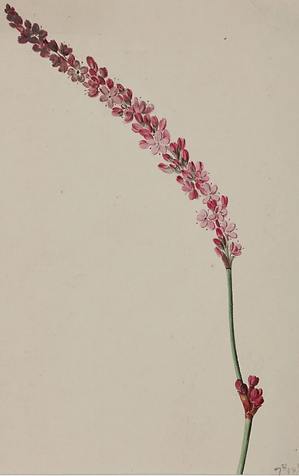
Credit: Invaluable.

Credit: Auctionet.
Heneage had a political career, being elected to the House of Commons as MP for Castle Rising (1772-1774), then for Maidstone (1774-1777). The University of Oxford awarded him the honorary degree of Doctor of Civil Laws on 7 July 1773. Heneage succeeded his father to the Earldom of Aylesford in 1777 and then entered the House of Lords. He served as a Lord of the Bedchamber for King George III (1777 - 1783) and was sworn onto the Privy Council in 1783, giving him proximity to the monarch and the honour of being a senior courtier. He also held the office of Captain of the Yeoman of the Guard between 1783 and 1804.
Heneage was a noted artist, and was taught drawing as an undergraduate student at Church Church, University of Oxford, by John Baptist Malchair. Whist the owner of Packington Hall and 4th Earl of Aylesford, he pursued the arts and became a Fellow of the Royal Society of Antiquaries (1773) and a Trustee of the British Museum (1787). He is known to have created numerous ink drawings and watercolour paintings, including depictions of the estate at Great Packington and other sites in the Warwickshire area, as well as places he visited during his travels in England and abroad. 50 of his works are in the Tate collection. When his works were exhibited in a show at the Royal Society, they were described as doing 'credit to their authors genius', and he himself as 'a man of cultivated taste and skill.'
The drawing on the left was produced by him in 1800, and the original mount featured an inscription of ‘In the Park at Packington’ in pen and brown ink. The image on the right is of nearby Kenilworth Castle and to the bottom right is a quick sketch of the interior of Great Packington's Church. The image far below is a birds eye view of Packington Hall, also produced by the Earl.

Images credit: Metropolitan Museum of Art and Tate.

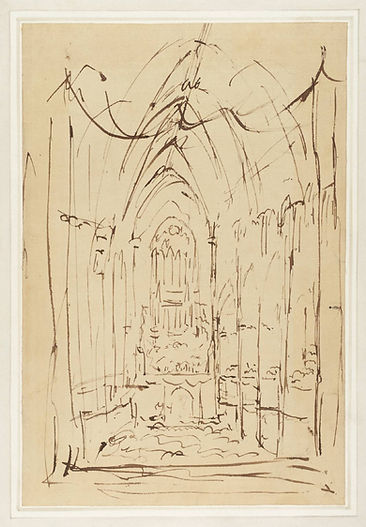
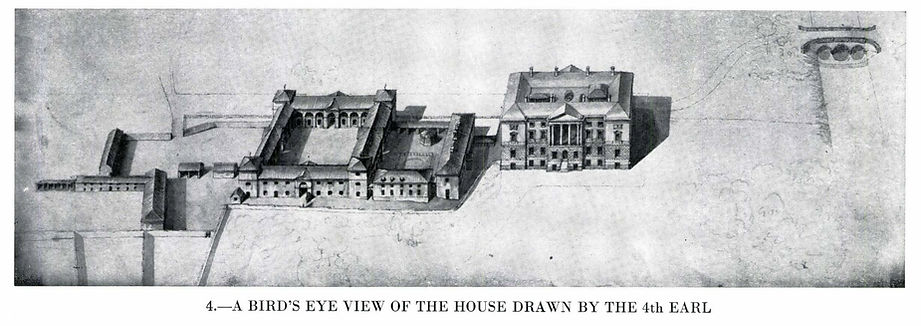
From Country Life magazine. Credit: FindMyPast.
Heneage died on 21 October 1812 at Packington Hall, from gout in his stomach. He was outlived by his wife for another 20 years, with Louisa passing away on 28 December 1832.
Heneage and Louisa had 14 children and several inherited their parents artistic talents. For example, their second son, the Honourable Daniel Finch, trained as a barrister and had a long career in the legal profession, but also produced topographical works in watercolour and pen and ink. The Fitzwilliam Museum, Cambridge, has one of his drawings, of the interior of St. Bartholomew's Church, from the neighbouring parish of Little Packington, in their collection.
Another of their sons, Charles Finch, became a Vicar and was the Rector of the aforesaid St. Bartholomew's Church, Little Packington, Warwickshire, from 1824 to 1859.
Sources:
-
Ancestry: England, Select Marriages, 1538-1973; Warwickshire, England, Church of England Baptisms, Marriages, and Burials, 1535-1812 and Westminster, London, England, Church of England Baptisms, Marriages and Burials, 1558-1812.
-
Auctionet.
-
Bagnall, James E. (1891). The Flora of Warwickshire. London: Gurney & Jackson.
-
The British Museum.
-
Cadbury, Dorothy Adlington. (1971) Computer-Mapped Flora, A Study of The County of Warwickshire. London: Published for the Birmingham Natural History Society, by Academic Press.
-
Cokayne, George Edward, ed. (2000) The Complete Peerage of England, Scotland, Ireland, Great Britain and the United Kingdom, Extant, Extinct or Dormant, new and reprinted ed. Gloucester: Alan Sutton Publishing.
-
Debrett's Peerage.
-
Desmond, Ray (1998). Dictionary Of British and Irish Botanists and Horticulturalists Including Plant Collectors, Flower Painters and Garden Designers. Eritrea: Taylor & Francis.
-
Gentleman's Magazine.
-
FindaGrave.
-
FindMyPast.
-
The Fitzwilliam Museum.
-
Foster, Joseph. (1888) Alumni Oxonienses: The Members of the University of Oxford, 1715-1886. Oxford: Park & Co.
-
Günther, Albert Carl Ludwig Gotthilf. (1904) The history of the collections contained in the Natural history departments of the British museum (vol. 1). London: Trustees of the British Museum.
-
History of Parliament Online.
-
Internet Archive.
-
Invaluable.
-
The London Gazette.
-
Mallalieu, H. L. (1976) The Dictionary of British Watercolour Artists up to 1920. England: Antique Collectors' Club.
-
Ogilvie, Marilyn Bailey and Harvey, Joy Dorothy (2000). The biographical dictionary of women in science: pioneering lives from ancient times to the mid-20th century. New York: Routledge.
-
Metropolitan Museum of Art.
-
Minneapolis Institute of Art.
-
Mutual Art.
-
National Portrait Gallery.
-
Sendino, Conseulo and Porter, Julian. (2021) Female aristocrats in the natural history world before the establishment of the Geological Society of London. In: Burek, C. V. and Higgs, B. M. eds. Celebrating 100 Years of Female Fellowship of the Geological Society: Discovering Forgotten Histories. London: Geological Society Special Publications,
-
The Peerage.
-
Tate Museum.
-
Tyack, Geoffrey. (1984). Warwickshire Country Houses. United Kingdom: Phillimore.